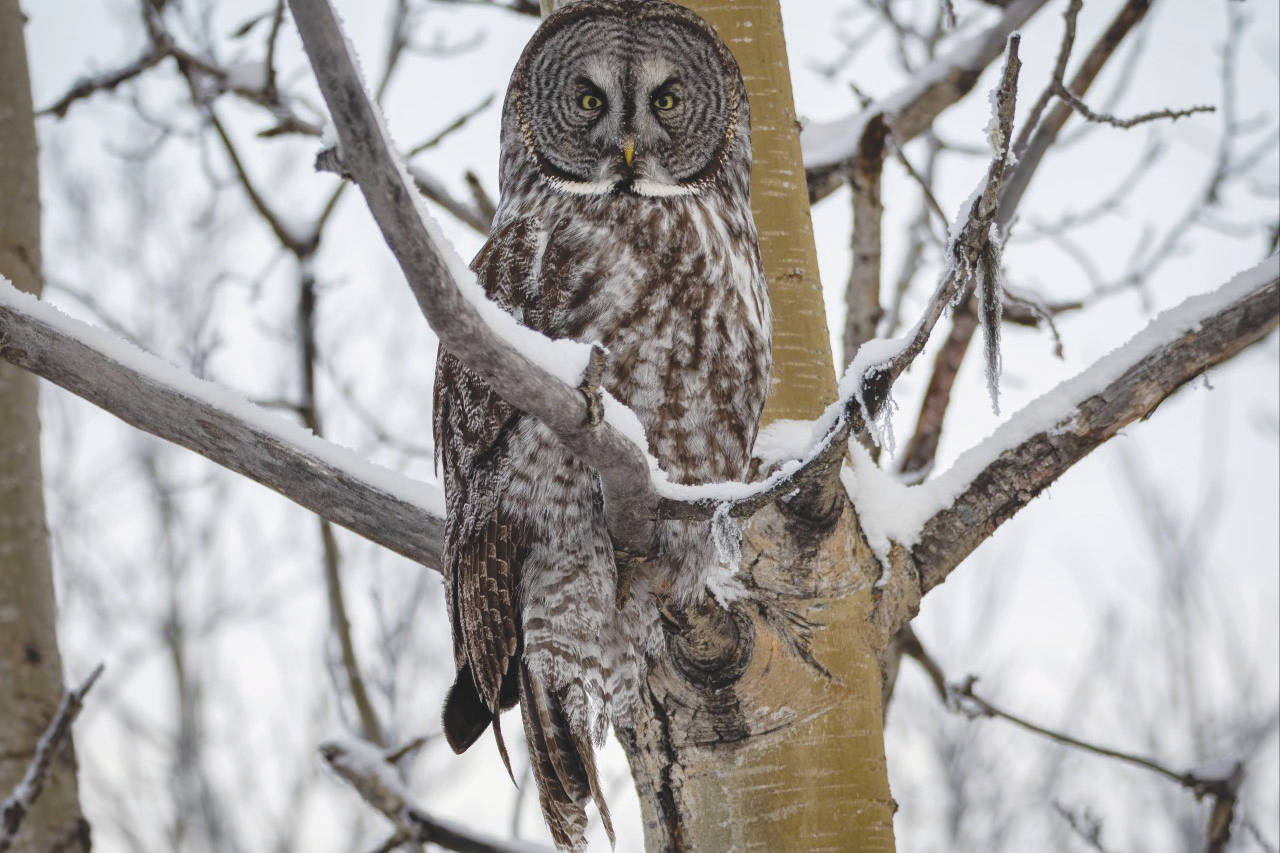Winter can be a fantastic time to observe owls. Owls can be very secretive, sitting quietly in trees with color patterns that provide effective camouflage.
Great gray owls are large, but are hard to see. January through March is the best time to find great grays according to ebird data.
Ebird (www.ebird.org) is a website managed by the Cornell Lab of Ornithology that catalogs data from citizen scientists and uses the information to create wonderful products like dynamic range maps and checklists with seasonal abundance information.
Great grays are not very vocal outside of the breeding season, but are starting to pair up and inspect nesting sites in January. Territorial calls, a repetitive series of low-pitched and even hoos made by both the male and female can alert us to their presence.
Many birders will never have the opportunity to see or hear a great gray because they only live in the more remote and dense forests of the boreal region that we call home. Great grays can be irruptive, showing up in large number from Northern populations when food is available.
They are the largest and tallest owl, though not the heaviest, with a big, round head. Great grays are silvery gray overall with a streaky appearance. They have large facial discs around their yellow eyes with prominent white patches at the bottom of the disc that are sometimes described as a “bow tie.”
The great horned owl is our other large owl, but it can be distinguished from the great gray by the two conspicuous “horns” sticking up on the top of the head. Great horned owls will kill the lighter great grays.
Great grays are active at night and at dusk and dawn. They hunt from perches by listening for prey moving under the snow. They can swoop down, hover and plunge through the snow crust to grab prey with their strong talons.
Voles are a big part of their diet, though other prey, such as smaller birds, other small mammals and even wood frogs, are eaten too. Plunge marks can be found on the snow where great grays have been hunting, ringed by sweeping marks made by their wings as they take back off.
Great grays live in very cold conditions and have adapted to be able to withstand the harsh environment and times of low food availability. Sometimes, great grays appear docile or tame when found. They are likely conserving energy to avoid starvation in the lean winter months. In the summer, their efficient and warm plumage makes them hot and they will seek shade.
Great gray owls live in spruce forests that are interspersed with open spaces such as peatland bogs. They utilize nests built by other large birds, such as raptors or ravens.
When they find a good nest, great grays will use the same place for years. Some of us will be lucky enough to have great grays nesting on our property. Others will be lucky enough to observe great grays while enjoying outdoor activities. I try to remember how special it is to live among these big owls.
Dr. Magness is a landscape ecologist at Kenai National Wildlife Refuge. Find more information at https://www.fws.gov/refuge/kenai/ or http://www.facebook.com/kenainationalwildliferefuge.
By DAWN ROBIN MAGNESS
Kenai National Wildlife Refuge

